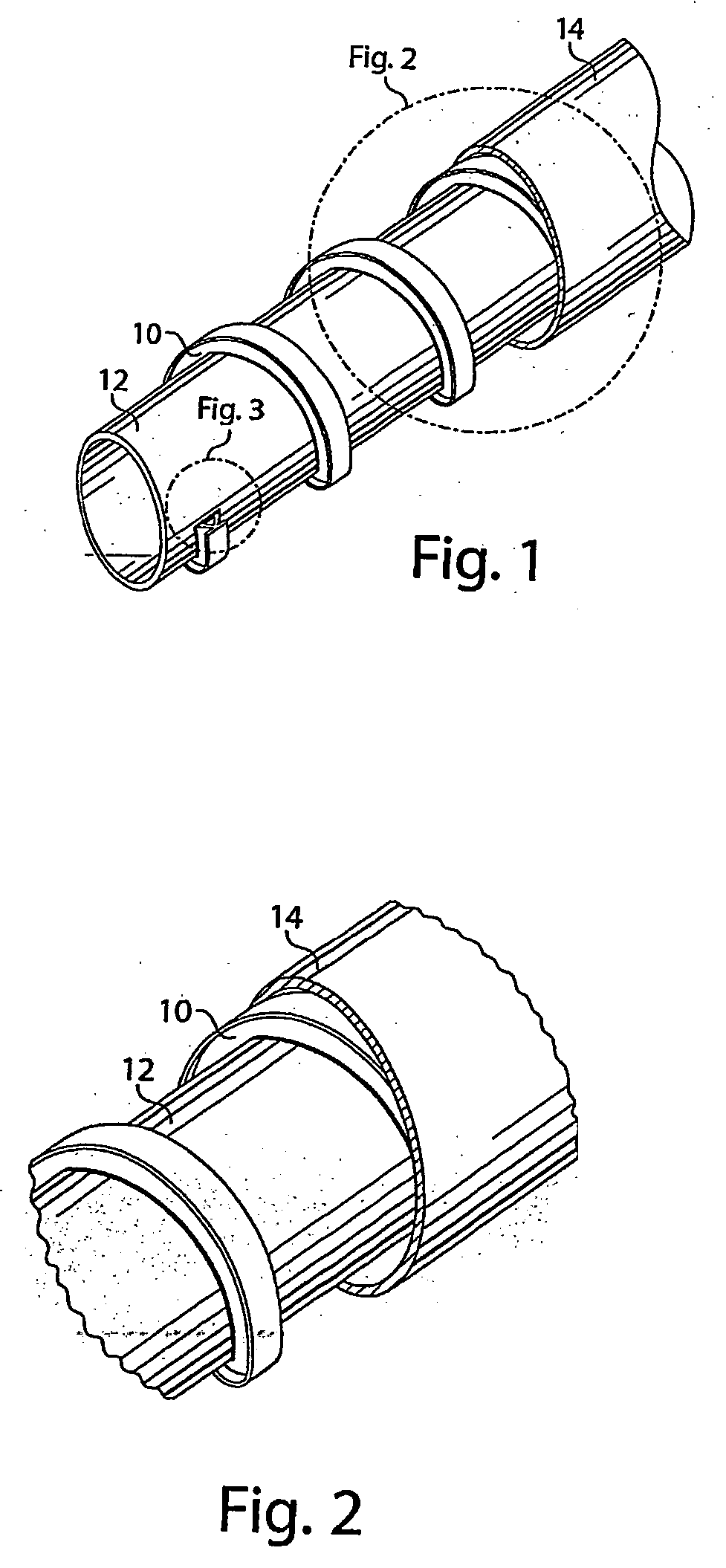Flexible, compression resistant and highly insulating systems
- Summary
- Abstract
- Description
- Claims
- Application Information
AI Technical Summary
Benefits of technology
Problems solved by technology
Method used
Image
Examples
Embodiment Construction
[0032] Traditional pipe-in-pipe designs, rely on the outer carrier pipe having sufficient thickness and strength to handle the external load on its own without collapsing under normal operating conditions. By necessity, this makes the outer wall of the carrier pipe relatively thick. For pipe-in-pipe configurations where spacers are utilized, placement of the spacers 10 is a matter of optimization. If the spacing is too large, the wall thickness of the carrier pipe 14 will have to be thick; and if the spacing is too small, the wall thickness of the carrier pipe 14 will be thin but the thermal conduction loss through the spacer 10 will increase. For optimization of spacer 10 spacing, the material properties of the spacer 10, such as thermal conductivity and mechanical strength of the carrier wall, are taken into account to arrive at the right spacing. Greater mechanical strength of the carrier wall and greater thermal conductivity of the spacer 10 both encourage the adoption of greate...
PUM
| Property | Measurement | Unit |
|---|---|---|
| Force | aaaaa | aaaaa |
| Pressure | aaaaa | aaaaa |
| Electrical resistance | aaaaa | aaaaa |
Abstract
Description
Claims
Application Information
 Login to View More
Login to View More - R&D
- Intellectual Property
- Life Sciences
- Materials
- Tech Scout
- Unparalleled Data Quality
- Higher Quality Content
- 60% Fewer Hallucinations
Browse by: Latest US Patents, China's latest patents, Technical Efficacy Thesaurus, Application Domain, Technology Topic, Popular Technical Reports.
© 2025 PatSnap. All rights reserved.Legal|Privacy policy|Modern Slavery Act Transparency Statement|Sitemap|About US| Contact US: help@patsnap.com



